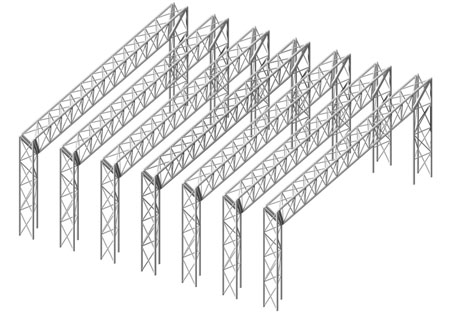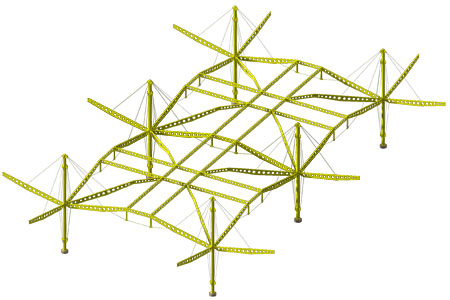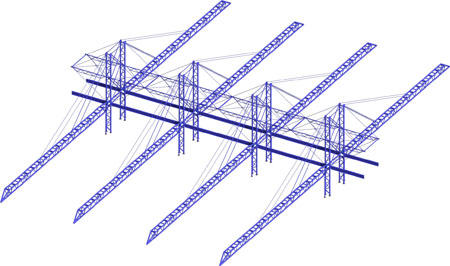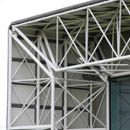Historic Case Study Projects
The Influence of High Tech Architecture on Steel Detailing
Prior to the onset of the High Tech Movement in architecture, exposed steel detailing was fairly limited. If used it tended to follow quite Miesian detailing, such as can be seen in the towers of Mies or the IIT Campus. Hollow Structural sections were not used in architecture in any significant way prior to the 1970s, so pre High Tech detailing was carried out using only standard wide flange, channel and angle sections. As noted in "Understanding Steel Design: An Architectural Design Manual", High Tech architecture can be categorized into three basic structural types - each responsible for creating its own language of connection details.
The typology of Early High Tech “assembled” architecture can be differentiated as:
Buildings based on a structural portal type frame that result in anextruded plan
 |
The Sainsbury Centre for the Arts by Norman Foster characterizes the structural portal frame type that results in an extruded plan. |
Buildings based on an expandable grid/bay system that can be extended uniformly in any direction
 |
The Renault Centre by Norman Foster characterizes the expandable grid/bay system as the building plan can be extended in any direction by simply expanding the number of bays. |
Buildings that rely on towers and tensile systems to suspend many structural elements (including roof planes) that would normally have their load path follow columns
 |
The Inmos Factory designed by Richard Rogers characterizes the building type that relies on towers and tensile systems. |
All of these buildings derive their details from standard connection methods, but apply principles of design akin to industrial design to the detailing of the connections. The way that this is done can make mass fabrication easier and economical, or it can make the building's structure prohibitively expensive. The high level of custom fabrication and detailing seen in these early examples resulted in very expensive architecture. As will be seen in some of the Contemporary examples in this web site, much can be done to interpret these early details into nice looking and less expensive systems.
Early High Tech architecture was created when computer systems were in their infancy. Much economy is now possible through the use of detailing software combined with computer assisted cutting. There is still significant work that is not done via robotics and which upholds the level of craftsmanship in this type of steel design.
